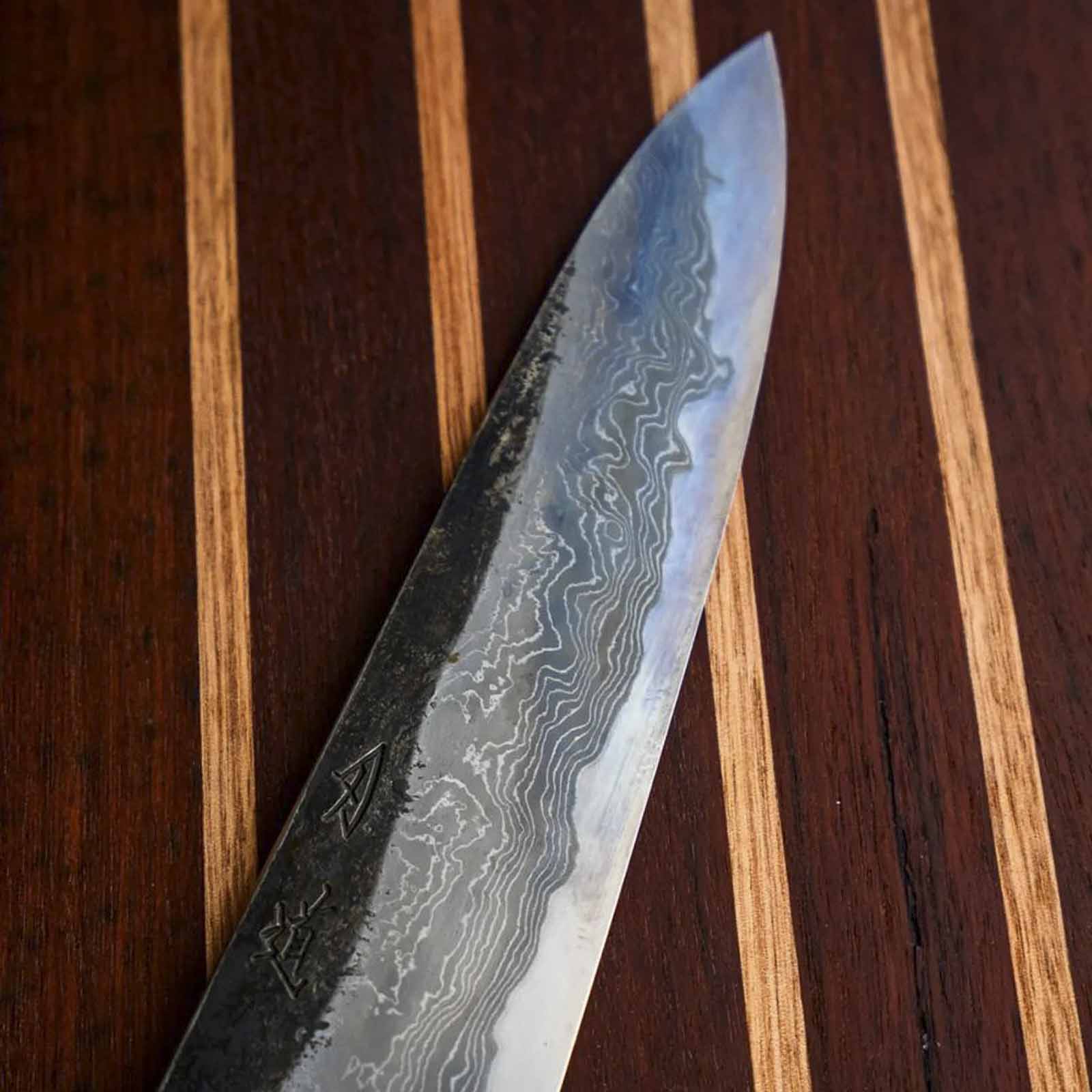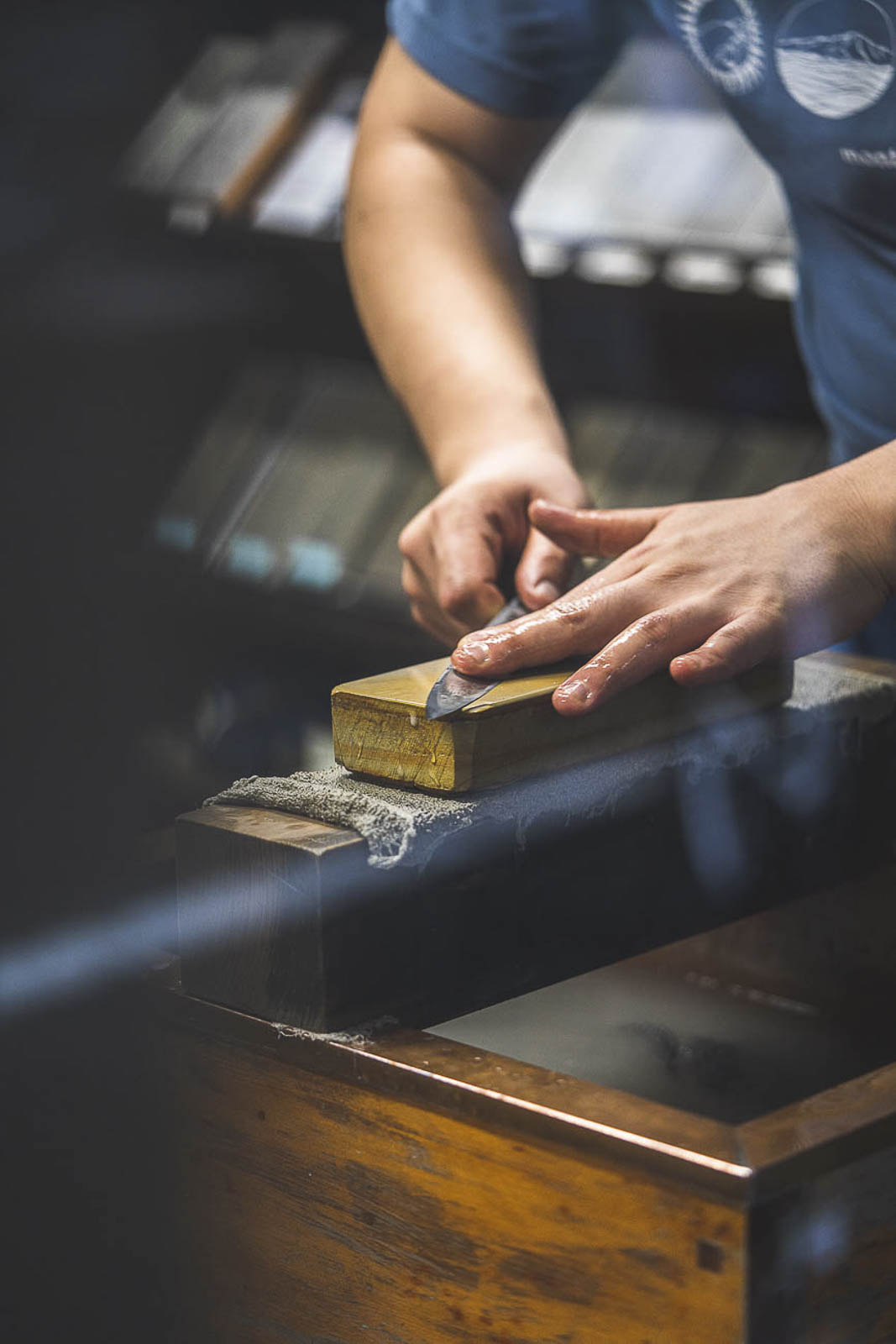Why are there marks on my new knife?
It may come as a shock to some to find stains and marks on your new expensive knife. So what are they and why do they appear?
One of the most common questions we get asked following the purchase of a new Japanese chef knife are the dark marks that can appear on high carbon steel blades.
These marks don’t wash away, and can result in discolouration that lasts for the life of the blade. Here, we’ll explain here the process behind a patina and how it can actually be beneficial.
What is a Patina? A patina in short is the discolouration or ‘aged’ look of a steel that lacks stainless steel elements (mainly chromium), which shows in shades of yellow, blue and grey.
There are particular types of steel that will show up a patina much faster than others, in different colours, as each steel has a different combination of elements. For example a patina will not only develop on steels such as Aogami and Shirogami, but also on copper and bronze which will show in shades of green and blue.
These steel types will not only show a patina, but due to their lack of stainless properties, they can also develop rust spots if not kept dry between uses.
What causes it?
The main causes of a patina forming likely occur from the first use of your blade. These are moisture, acid, and salts. The acidity of citrus and the moisture of proteins will both cause different markings on the blade to form, all of these are unavoidable.
There have been many instances of Japanese knives on display being touched by bare hands, and the moisture from fingerprints when unwiped afterwards, can cause patina or rust spots to form.
How is it a good thing?
Once a patina has been formed on your Japanese knife, it acts like a seal, and can actually protect the steel underneath from rusting. While your knife may not look the way it was when it was brand new, it is uniquely yours and carries with it the marks of many meals prepared.
Why aren’t all blades stainless steel? Wouldn’t that be easier?
Easier to maintain? Yes. Beneficial for all purposes? No. Stainless steel blades can be used in a much more carefree manner, as they are often softer steels which take more punishment, do not discolour, and can be left wet for longer without having rust appear.
However, a high-carbon steel Japanese chef knife can be hardened to a higher hardness (HRC), contains more carbon and other strengthening elements, and as such will have an edge that stays much sharper for longer. For a chef that uses his knives day in and day out, not having to sharpen his blades every couple of days can be hugely beneficial, with the trade off being they must be wiped down between uses.
There are however, exotic steel types that exist (SG2/R2, ZDP-189) that combine the high-carbon, long lasting edge retention with the high stainless elements that create knives with incredible performance and almost zero maintenance. These knives can only be made by skilled craftsman, and the steels are often expensive to procure and difficult to work with.
Can I remove a Patina?
A patina can be removed using a knife polishing compound, or by using a whetstone to remove some steel off the affected area of the blade. This is a process that one must be competent in to accomplish properly. It is however likely that the knife will just develop another patina straight after it’s first use anyway.
How do I control rust?
Rust spots can form minutes after a blade is left wet or with food residue, so the best way to control rust spots on your blade is to wipe your knife down with a clean cloth after use, keep them dry, and stored away from any sources of moisture or salt.
A patina is an unavoidable result of purchasing a high-carbon steel knife, but with a little care and maintenance, can be a protector of your knife to ensure it’s prolonged use.



